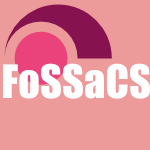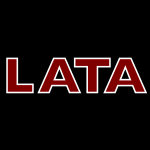50 papers:
 FoSSaCS-2015-Ganardi #bound #clique #game studies
FoSSaCS-2015-Ganardi #bound #clique #game studies- Parity Games of Bounded Tree- and Clique-Width (MG), pp. 390–404.
 STOC-2015-MekaPW #bound #clique
STOC-2015-MekaPW #bound #clique- Sum-of-squares Lower Bounds for Planted Clique (RM, AP, AW), pp. 87–96.
 ICALP-v2-2015-BojanczykMW #bound #clique #datalog #monad #source code
ICALP-v2-2015-BojanczykMW #bound #clique #datalog #monad #source code- Containment of Monadic Datalog Programs via Bounded Clique-Width (MB, FM, AW), pp. 427–439.
 LATA-2015-DabrowskiHP #bound #clique #graph
LATA-2015-DabrowskiHP #bound #clique #graph- Bounding Clique-Width via Perfect Graphs (KKD, SH, DP), pp. 676–688.
 KDD-2015-MitzenmacherPPT #clique #detection #network #scalability
KDD-2015-MitzenmacherPPT #clique #detection #network #scalability- Scalable Large Near-Clique Detection in Large-Scale Networks via Sampling (MM, JP, RP, CET, SCX), pp. 815–824.
 STOC-2013-FeldmanGRVX #algorithm #bound #clique #detection #statistics
STOC-2013-FeldmanGRVX #algorithm #bound #clique #detection #statistics- Statistical algorithms and a lower bound for detecting planted cliques (VF, EG, LR, SV, YX), pp. 655–664.
 CHI-2013-DunneS #clique #network #readability #visualisation
CHI-2013-DunneS #clique #network #readability #visualisation- Motif simplification: improving network visualization readability with fan, connector, and clique glyphs (CD, BS), pp. 3247–3256.
 KDD-2013-TsourakakisBGGT #clique #quality
KDD-2013-TsourakakisBGGT #clique #quality- Denser than the densest subgraph: extracting optimal quasi-cliques with quality guarantees (CET, FB, AG, FG, MAT), pp. 104–112.
 KDD-2013-WangCF #clique
KDD-2013-WangCF #clique- Redundancy-aware maximal cliques (JW, JC, AWCF), pp. 122–130.
 SAT-2013-HeuleS #approach #clique #satisfiability
SAT-2013-HeuleS #approach #clique #satisfiability- A SAT Approach to Clique-Width (MH, SS), pp. 318–334.
 ICALP-v1-2012-CyganKPPW #clique #graph
ICALP-v1-2012-CyganKPPW #clique #graph- Clique Cover and Graph Separation: New Incompressibility Results (MC, SK, MP, MP, MW), pp. 254–265.
 ICALP-v1-2012-HalldorssonSSW #approximate #clique #communication #complexity #streaming
ICALP-v1-2012-HalldorssonSSW #approximate #clique #communication #complexity #streaming- Streaming and Communication Complexity of Clique Approximation (MMH, XS, MS, CW), pp. 449–460.
 ICML-2012-QuadriantoCL #clique #graph #persistent #set
ICML-2012-QuadriantoCL #clique #graph #persistent #set- The Most Persistent Soft-Clique in a Set of Sampled Graphs (NQ, CC, CHL), p. 32.
 ICPR-2012-ChenCZ #classification #clique #representation
ICPR-2012-ChenCZ #classification #clique #representation- Object clique representation for scene classification (JC, XC, BZ), pp. 2829–2832.
 ICPR-2012-HouXCXQ #clique #set
ICPR-2012-HouXCXQ #clique #set- Dominant set and target clique extraction (JH, EX, LC, QX, NQ), pp. 1831–1834.
 KDD-2012-ChengZKC #algorithm #clique #memory management #performance
KDD-2012-ChengZKC #algorithm #clique #memory management #performance- Fast algorithms for maximal clique enumeration with limited memory (JC, LZ, YK, SC), pp. 1240–1248.
 VLDB-2011-KargarA #clique #graph #keyword
VLDB-2011-KargarA #clique #graph #keyword- Keyword Search in Graphs: Finding r-cliques (MK, AA), pp. 681–692.
 FoSSaCS-2011-DelzannoSZ #ad hoc #clique #network #on the #power of #verification
FoSSaCS-2011-DelzannoSZ #ad hoc #clique #network #on the #power of #verification- On the Power of Cliques in the Parameterized Verification of Ad Hoc Networks (GD, AS, GZ), pp. 441–455.
 ICALP-v1-2011-Nonner #clique #clustering #graph
ICALP-v1-2011-Nonner #clique #clustering #graph- Clique Clustering Yields a PTAS for max-Coloring Interval Graphs (TN), pp. 183–194.
 MLDM-2011-LiHO #clique #correlation #performance
MLDM-2011-LiHO #clique #correlation #performance- Contrasting Correlations by an Efficient Double-Clique Condition (AL, MH, YO), pp. 469–483.
 SAC-2011-KatayamaKKM #algorithm #clique #problem
SAC-2011-KatayamaKKM #algorithm #clique #problem- Memetic algorithm with strategic controller for the maximum clique problem (KK, AK, KK, HM), pp. 1062–1069.
 SIGMOD-2010-ChengKFYZ #clique #network
SIGMOD-2010-ChengKFYZ #clique #network- Finding maximal cliques in massive networks by H*-graph (JC, YK, AWCF, JXY, LZ), pp. 447–458.
 KEOD-2009-VealeL #clique #ontology
KEOD-2009-VealeL #clique #ontology- Ontological Cliques — Analogy as an Organizing Principle in Ontology Construction (TV, GL), pp. 34–41.
 STOC-2008-Rossman #clique #complexity #on the
STOC-2008-Rossman #clique #complexity #on the- On the constant-depth complexity of k-clique (BR), pp. 721–730.
 CIKM-2008-LinL #clique #mining #performance
CIKM-2008-LinL #clique #mining #performance- Fast spatial co-location mining without cliqueness checking (ZL, SL), pp. 1461–1462.
 CIKM-2008-ModaniD #clique #graph #scalability
CIKM-2008-ModaniD #clique #graph #scalability- Large maximal cliques enumeration in sparse graphs (NM, KD), pp. 1377–1378.
 ICPR-2008-SanromaSA #clique #graph
ICPR-2008-SanromaSA #clique #graph- Improving the matching of graphs generated from shapes by the use of procrustes distances into a clique-based MAP formulation (GS, FS, RA), pp. 1–4.
 ICPR-2008-SrihariNNL #clique #detection #network
ICPR-2008-SrihariNNL #clique #detection #network- Detecting hubs and quasi cliques in scale-free networks (SS, HKN, KN, HWL), pp. 1–4.
 SIGIR-2008-HuXZSL #clique #clustering #documentation #perspective
SIGIR-2008-HuXZSL #clique #clustering #documentation #perspective- Hypergraph partitioning for document clustering: a unified clique perspective (TH, HX, WZ, SYS, HL), pp. 871–872.
 SAT-2008-HerasL #clique #preprocessor #satisfiability
SAT-2008-HerasL #clique #preprocessor #satisfiability- A Max-SAT Inference-Based Pre-processing for Max-Clique (FH, JL), pp. 139–152.
 ICML-2007-GuptaDS #clique #performance
ICML-2007-GuptaDS #clique #performance- Efficient inference with cardinality-based clique potentials (RG, AAD, SS), pp. 329–336.
 CSL-2007-Obdrzalek #clique #game studies
CSL-2007-Obdrzalek #clique #game studies- Clique-Width and Parity Games (JO), pp. 54–68.
 STOC-2006-FellowsRRS #clique #np-hard
STOC-2006-FellowsRRS #clique #np-hard- Clique-width minimization is NP-hard (MRF, FAR, UR, SS), pp. 354–362.
 STOC-2006-Zuckerman #clique #linear
STOC-2006-Zuckerman #clique #linear- Linear degree extractors and the inapproximability of max clique and chromatic number (DZ), pp. 681–690.
 ICALP-v1-2006-KhotP #clique
ICALP-v1-2006-KhotP #clique- Better Inapproximability Results for MaxClique, Chromatic Number and Min-3Lin-Deletion (SK, AKP), pp. 226–237.
 KDD-2006-ZengWZK #clique #database #graph #scalability
KDD-2006-ZengWZK #clique #database #graph #scalability- Coherent closed quasi-clique discovery from large dense graph databases (ZZ, JW, LZ, GK), pp. 797–802.
 PADL-2006-NavasBH #analysis #clique #performance #top-down #using
PADL-2006-NavasBH #analysis #clique #performance #top-down #using- Efficient Top-Down Set-Sharing Analysis Using Cliques (JAN, FB, MVH), pp. 183–198.
 LICS-2006-LaurentF #bound #clique #complexity #semantics
LICS-2006-LaurentF #bound #clique #complexity #semantics- Obsessional Cliques: A Semantic Characterization of Bounded Time Complexity (OL, LTdF), pp. 179–188.
 KDD-2005-PeiJZ #clique #mining #on the
KDD-2005-PeiJZ #clique #mining #on the- On mining cross-graph quasi-cliques (JP, DJ, AZ), pp. 228–238.
 ICEIS-v2-2004-KuusikLV #clique #data mining #mining
ICEIS-v2-2004-KuusikLV #clique #data mining #mining- Data Mining: Pattern Mining as a Clique Extracting Task (RK, GL, LV), pp. 519–522.
 ICML-2004-LaffertyZL #clique #kernel #random #representation
ICML-2004-LaffertyZL #clique #kernel #random #representation- Kernel conditional random fields: representation and clique selection (JDL, XZ, YL).
 SAC-2004-KatayamaHN #clique #problem
SAC-2004-KatayamaHN #clique #problem- Solving the maximum clique problem by k-opt local search (KK, AH, HN), pp. 1021–1025.
 ICALP-2001-GottlobP #clique #model checking
ICALP-2001-GottlobP #clique #model checking- Hypergraphs in Model Checking: Acyclicity and Hypertree-Width versus Clique-Width (GG, RP), pp. 708–719.
 STOC-2000-Srinivasan #clique
STOC-2000-Srinivasan #clique- The value of strong inapproximability results for clique (AS), pp. 144–152.
 ICALP-2000-EngebretsenH #approximate #clique
ICALP-2000-EngebretsenH #approximate #clique- Clique Is Hard to Approximate within n1-o(1) (LE, JH), pp. 2–12.
 ICPR-v1-2000-LerasleDL #clique
ICPR-v1-2000-LerasleDL #clique- Relaxation vs. Maximal Cliques Search for Projected Beams Labeling in a Structured Light Sensor (FL, MD, JML), pp. 1782–1785.
 SAC-1998-Marchiori98a #algorithm #clique #heuristic #problem #search-based
SAC-1998-Marchiori98a #algorithm #clique #heuristic #problem #search-based- A simple heuristic based genetic algorithm for the maximum clique problem (EM), pp. 366–373.
 STOC-1996-Hastad #clique #testing
STOC-1996-Hastad #clique #testing- Testing of the Long Code and Hardness for Clique (JH), pp. 11–19.
 STOC-1991-FederM #algorithm #clique #graph
STOC-1991-FederM #algorithm #clique #graph- Clique Partitions, Graph Compression, and Speeding-Up Algorithms (TF, RM), pp. 123–133.
 PLDI-1989-GuptaSS #clique
PLDI-1989-GuptaSS #clique- Register Allocation via Clique Separators (RG, MLS, TS), pp. 264–274.
 FoSSaCS-2015-Ganardi #bound #clique #game studies
FoSSaCS-2015-Ganardi #bound #clique #game studies STOC-2015-MekaPW #bound #clique
STOC-2015-MekaPW #bound #clique ICALP-v2-2015-BojanczykMW #bound #clique #datalog #monad #source code
ICALP-v2-2015-BojanczykMW #bound #clique #datalog #monad #source code LATA-2015-DabrowskiHP #bound #clique #graph
LATA-2015-DabrowskiHP #bound #clique #graph KDD-2015-MitzenmacherPPT #clique #detection #network #scalability
KDD-2015-MitzenmacherPPT #clique #detection #network #scalability STOC-2013-FeldmanGRVX #algorithm #bound #clique #detection #statistics
STOC-2013-FeldmanGRVX #algorithm #bound #clique #detection #statistics CHI-2013-DunneS #clique #network #readability #visualisation
CHI-2013-DunneS #clique #network #readability #visualisation KDD-2013-TsourakakisBGGT #clique #quality
KDD-2013-TsourakakisBGGT #clique #quality KDD-2013-WangCF #clique
KDD-2013-WangCF #clique SAT-2013-HeuleS #approach #clique #satisfiability
SAT-2013-HeuleS #approach #clique #satisfiability ICALP-v1-2012-CyganKPPW #clique #graph
ICALP-v1-2012-CyganKPPW #clique #graph ICALP-v1-2012-HalldorssonSSW #approximate #clique #communication #complexity #streaming
ICALP-v1-2012-HalldorssonSSW #approximate #clique #communication #complexity #streaming ICML-2012-QuadriantoCL #clique #graph #persistent #set
ICML-2012-QuadriantoCL #clique #graph #persistent #set ICPR-2012-ChenCZ #classification #clique #representation
ICPR-2012-ChenCZ #classification #clique #representation ICPR-2012-HouXCXQ #clique #set
ICPR-2012-HouXCXQ #clique #set KDD-2012-ChengZKC #algorithm #clique #memory management #performance
KDD-2012-ChengZKC #algorithm #clique #memory management #performance VLDB-2011-KargarA #clique #graph #keyword
VLDB-2011-KargarA #clique #graph #keyword FoSSaCS-2011-DelzannoSZ #ad hoc #clique #network #on the #power of #verification
FoSSaCS-2011-DelzannoSZ #ad hoc #clique #network #on the #power of #verification ICALP-v1-2011-Nonner #clique #clustering #graph
ICALP-v1-2011-Nonner #clique #clustering #graph MLDM-2011-LiHO #clique #correlation #performance
MLDM-2011-LiHO #clique #correlation #performance SAC-2011-KatayamaKKM #algorithm #clique #problem
SAC-2011-KatayamaKKM #algorithm #clique #problem SIGMOD-2010-ChengKFYZ #clique #network
SIGMOD-2010-ChengKFYZ #clique #network KEOD-2009-VealeL #clique #ontology
KEOD-2009-VealeL #clique #ontology STOC-2008-Rossman #clique #complexity #on the
STOC-2008-Rossman #clique #complexity #on the CIKM-2008-LinL #clique #mining #performance
CIKM-2008-LinL #clique #mining #performance CIKM-2008-ModaniD #clique #graph #scalability
CIKM-2008-ModaniD #clique #graph #scalability ICPR-2008-SanromaSA #clique #graph
ICPR-2008-SanromaSA #clique #graph ICPR-2008-SrihariNNL #clique #detection #network
ICPR-2008-SrihariNNL #clique #detection #network SIGIR-2008-HuXZSL #clique #clustering #documentation #perspective
SIGIR-2008-HuXZSL #clique #clustering #documentation #perspective SAT-2008-HerasL #clique #preprocessor #satisfiability
SAT-2008-HerasL #clique #preprocessor #satisfiability ICML-2007-GuptaDS #clique #performance
ICML-2007-GuptaDS #clique #performance CSL-2007-Obdrzalek #clique #game studies
CSL-2007-Obdrzalek #clique #game studies STOC-2006-FellowsRRS #clique #np-hard
STOC-2006-FellowsRRS #clique #np-hard STOC-2006-Zuckerman #clique #linear
STOC-2006-Zuckerman #clique #linear ICALP-v1-2006-KhotP #clique
ICALP-v1-2006-KhotP #clique KDD-2006-ZengWZK #clique #database #graph #scalability
KDD-2006-ZengWZK #clique #database #graph #scalability PADL-2006-NavasBH #analysis #clique #performance #top-down #using
PADL-2006-NavasBH #analysis #clique #performance #top-down #using LICS-2006-LaurentF #bound #clique #complexity #semantics
LICS-2006-LaurentF #bound #clique #complexity #semantics KDD-2005-PeiJZ #clique #mining #on the
KDD-2005-PeiJZ #clique #mining #on the ICEIS-v2-2004-KuusikLV #clique #data mining #mining
ICEIS-v2-2004-KuusikLV #clique #data mining #mining ICML-2004-LaffertyZL #clique #kernel #random #representation
ICML-2004-LaffertyZL #clique #kernel #random #representation SAC-2004-KatayamaHN #clique #problem
SAC-2004-KatayamaHN #clique #problem ICALP-2001-GottlobP #clique #model checking
ICALP-2001-GottlobP #clique #model checking STOC-2000-Srinivasan #clique
STOC-2000-Srinivasan #clique ICALP-2000-EngebretsenH #approximate #clique
ICALP-2000-EngebretsenH #approximate #clique ICPR-v1-2000-LerasleDL #clique
ICPR-v1-2000-LerasleDL #clique SAC-1998-Marchiori98a #algorithm #clique #heuristic #problem #search-based
SAC-1998-Marchiori98a #algorithm #clique #heuristic #problem #search-based STOC-1996-Hastad #clique #testing
STOC-1996-Hastad #clique #testing STOC-1991-FederM #algorithm #clique #graph
STOC-1991-FederM #algorithm #clique #graph PLDI-1989-GuptaSS #clique
PLDI-1989-GuptaSS #clique









